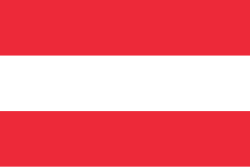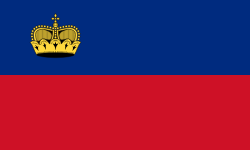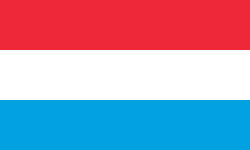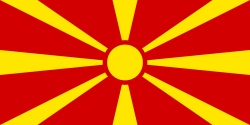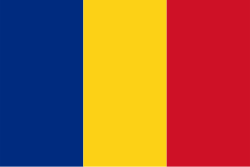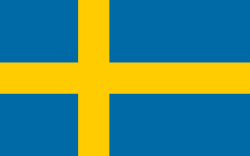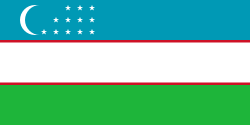General Information
Population
Immigration
Emigration
Working-age population
Unemployment rate
GDP
Refugees, Asylum seekers, IDPs
Citizenship
Territory
Migration Authorities
Responsible Body
Line Ministries
Agencies
Key Policy Documents
Description
The Republic of Azerbaijan features substantial cross-border movements, both from and into the country. In 2022, the border crossings exceeded 6 million in both directions, with half of them performed by foreigners and stateless persons and another half by Azerbaijani nationals.
In 2023, there were 3,638 immigrants and 2,483 emigrants according to the State Statistics Committee. Since 2008, Azerbaijan’s net migration is positive reaching 1,8 in 2022 and 1,2 in 2023. The population of Azerbaijan has been steadily growing, surpassing 10 million people in 2021. Azerbaijan is projected to remain the most populous country in the South Caucasus until 2045.
Emigration from Azerbaijan is mostly a regional phenomenon. Based on the UN migrant stocks 2020, the most populous Azerbaijani communities exist in Russia, Ukraine, and Kazakhstan. Altogether, these countries are home to nearly one million Azerbaijani nationals. From 2013 to 2020, 10,547 Azerbaijanis left for permanent residence of whom 62% were female. The vast majority of all Azerbaijani emigrants have settled in the CIS region, primarily to Russia, followed by Kazakhstan, Türkiye (25 950 Azerbaijani in 2023), Ukraine, and Georgia.
The EU and the US are also becoming increasingly attractive for Azerbaijani emigrants. EU countries issued 11,310 first-time permits in 2022 to Azerbaijani nationals, 32% more than in 2019. Poland (mostly for employment and education), Germany (equal numbers for all reasons) and Lithuania (mostly for employment) are issuing most of such permits. In 2023, the amount of first-time permits in Lithuania increased fivefold, which could be due to the rising labour shortages. However, in absolute numbers, Azerbaijani nationals represent a smaller group of migrants in Lithuania compared to nationals from other Post-Soviet countries. Looking at the number of all valid permits at the year end, Germany issued most residence permits for family reasons (5 780) of Azerbaijani emigrants in 2022 while Poland had the most valid permits issued for employment (4 439) in 2023 as well as those issued for all reasons and length of validity (7 225).
The immigrant stock in Azerbaijan in 2020 constituted 252 228 persons. From 2001 to 2023, the average annual immigration flow remained steady at approximately 2,500 people. However, 2023 saw a significant increase, with 3,638 immigrants recorded, representing a 27% rise compared to 2022, which could be attributed to the challenging geopolitical situation in the region. As of 2013, Georgians, Russians and Turks represent the three main groups of immigrants.
According to the State Statistical Committee, there is an increase in permanent residency permits (from 2900 in 2022 to 3700 in 2023), with significant numbers coming from neighbouring countries such as Russia, Georgia and Türkiye. Out of nearly 8,000 long-term work permits issued or extended in 2022, over half (4,506) were issued to Turkish nationals (4,506 in 2022) followed by citizens of Russia (506), the UK (503) and India (377). Notably, nationals of just ten countries account for around 81% of all work permit issuances and extensions, with citizens of Türkiye and the United Kingdom together receiving 55% of all work permits issued for the period 2013-2021. These permits are part of Azerbaijan's strategy to manage labour migration effectively and ensure that the influx of foreign workers aligns with the nation's labour market demands. Work permits in Azerbaijan are regulated by annually calculated labour quotas established by the Cabinet of Ministers, reflecting the country's labour needs.
Irregular migration of foreign nationals in Azerbaijan has slightly increased, up from 21,438 persons violating the national migration law in 2017 to 23,089 persons in 2023. Meanwhile, the return rates of irregular Azerbaijani migrants from the EU increased from 39.5% in 2022 to 53.8% in 2023. In 2023, out of 1,365 persons – mostly from Germany (285), France (275), Sweden (170) - who were ordered to leave 735 actually returned (130 from Germany).
According to the UNHCR, as of 2023, there are 6,777 asylum seekers and 158,098 refugees from Azerbaijan worldwide. In 2021, 9 persons applied for asylum in Azerbaijan, whereas 47 persons (78 with family members) were granted protection, most of whom were nationals of Afghanistan, Pakistan and Iran. The recognition rate remains low and did not exceed ten persons over three years. At the end of 2023, Azerbaijan was still hosting 658,000 IDPs, as a result of the decades-long conflict in the Karabakh region, which ended in September 2023, following Azerbaijan’s military operation. After the restoration of its sovereignty in Karabakh, Azerbaijan initiated a program for the return of internally displaced persons who fled Karabakh for other parts of Azerbaijan over the past 30 years, aiming to resettle around 140,000 IDPs by 2026, while 5,400 former IDPs have already been resettled by early 2024. The programme envisages the reconstruction of parts of the Karabakh and East Zangazur regions, intended for resettlement, including the construction of housing.
Azerbaijan endorsed the Global Compact for Migration. On 17 March 2021, it signed the Seat Agreement with ICMPD on the status of the latter in the Republic. The country also developed a new National Strategy on Migration for 2020-2025 in compliance with relevant international legal frameworks, but the strategy has been pending adoption still in July 2024. Azerbaijan performed a diaspora mapping, providing insights into the skills and demographic profiles of Azerbaijani diaspora communities. In June 2023, Azerbaijan amended its Migration Code by widening the options for temporary residence permits for foreigners engaged in entrepreneurial activities. The new amendments also changed grounds for obtaining permanent residency in Azerbaijan. The framework for EU-Azerbaijan relations is set by the EU-Azerbaijan Partnership Priorities endorsed 2018, with mobility and people-to-people contacts being one of the key areas. One specific objective of the Partnership is to promote a holistic approach, to strengthen capacities and coordination among institutions dealing with migration governance, through the full implementation and smooth functioning of the Visa Facilitation and Readmission Agreements and future potential visa liberalisation dialogue, and to foster the effective implementation of the Mobility Partnership.
Attracting highly skilled migrants to stimulate the economy has been one of the main policy objectives of Azerbaijan in the last couple of years. On 6 June 2024, President Aliyev signed a decree "On measures to attract highly skilled foreigners and stateless persons to engage in paid employment in the Republic of Azerbaijan". This decree establishes the Highly Skilled Migrants Programme, designed to increase opportunities for such individuals to engage in paid employment in Azerbaijan. As part of the decree, the Cabinet of Ministers has been given a three-month deadline to draft regulations that will outline the benefits for highly skilled migrants. These regulations will cover necessary documents for staying, residing, or working in Azerbaijan, the duration of permits, exemptions from work permit requirements, and the processing time for applications. The benefits will apply to the qualified migrants and their families and will be facilitated through a one-window portal.
Relevant Publications


